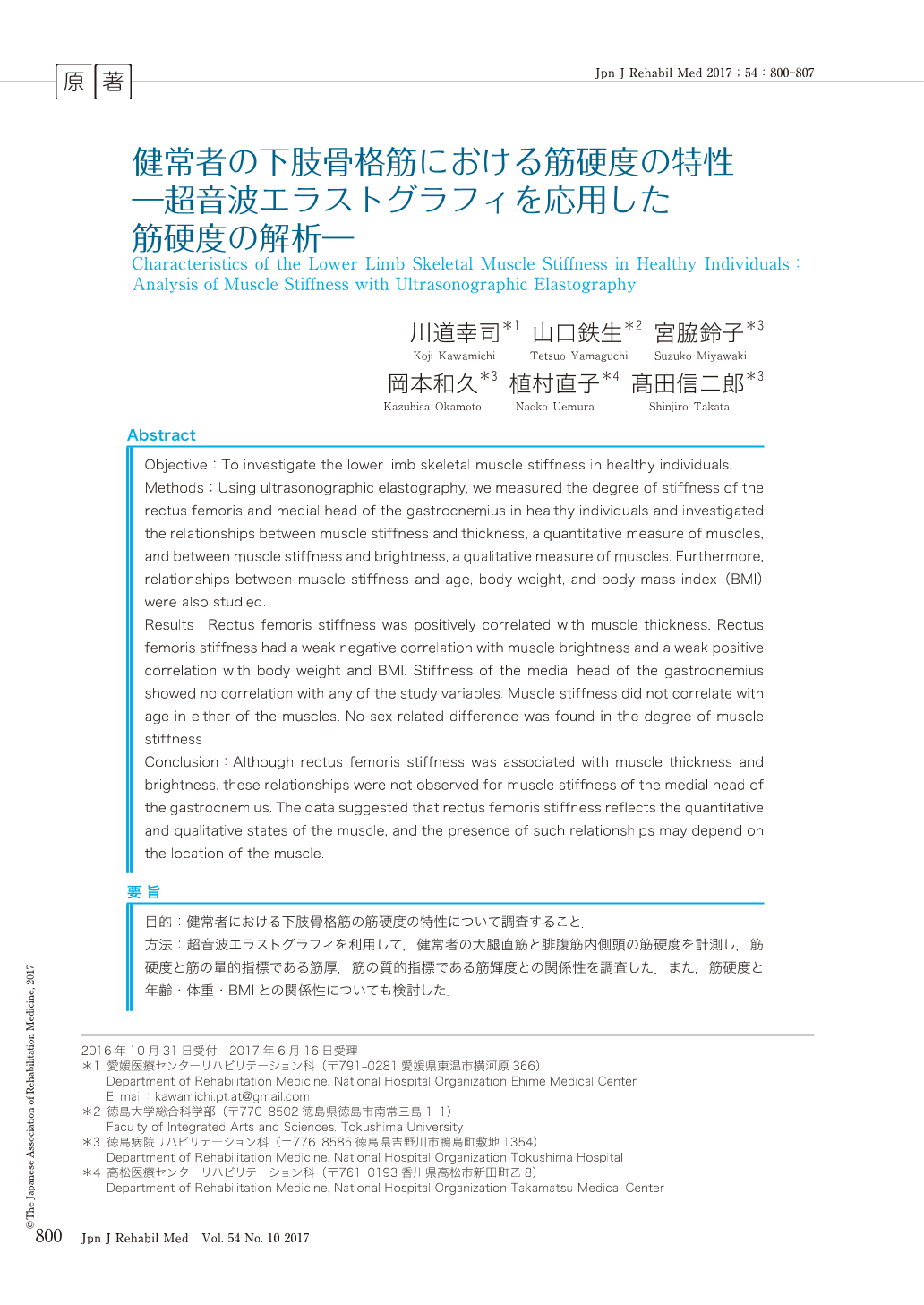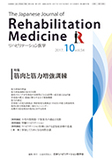Japanese
English
- 販売していません
- Abstract 文献概要
- 1ページ目 Look Inside
- 参考文献 Reference
要旨
目的:健常者における下肢骨格筋の筋硬度の特性について調査すること.
方法:超音波エラストグラフィを利用して,健常者の大腿直筋と腓腹筋内側頭の筋硬度を計測し,筋硬度と筋の量的指標である筋厚,筋の質的指標である筋輝度との関係性を調査した.また,筋硬度と年齢・体重・BMIとの関係性についても検討した.
結果:大腿直筋の筋硬度は,筋厚と正の相関があり,筋輝度とは弱い負の相関がみられた.また,体重やBMIとは弱い正の相関がみられた.一方,腓腹筋内側頭では,筋硬度と相関する因子はなかった.いずれの筋も筋硬度と年齢に相関はなかった.また,筋硬度に性差はなかった.
結論:大腿直筋の筋硬度は,筋厚および筋輝度と関係していたが,腓腹筋内側頭では,それらの関連性はみられなかった.大腿直筋における筋硬度は,骨格筋の量および質的状態を反映することが示唆されたが,このような関係性は筋の部位によって異なる可能性がある.
Objective:To investigate the lower limb skeletal muscle stiffness in healthy individuals.
Methods:Using ultrasonographic elastography, we measured the degree of stiffness of the rectus femoris and medial head of the gastrocnemius in healthy individuals and investigated the relationships between muscle stiffness and thickness, a quantitative measure of muscles, and between muscle stiffness and brightness, a qualitative measure of muscles. Furthermore, relationships between muscle stiffness and age, body weight, and body mass index (BMI) were also studied.
Results:Rectus femoris stiffness was positively correlated with muscle thickness. Rectus femoris stiffness had a weak negative correlation with muscle brightness and a weak positive correlation with body weight and BMI. Stiffness of the medial head of the gastrocnemius showed no correlation with any of the study variables. Muscle stiffness did not correlate with age in either of the muscles. No sex-related difference was found in the degree of muscle stiffness.
Conclusion:Although rectus femoris stiffness was associated with muscle thickness and brightness, these relationships were not observed for muscle stiffness of the medial head of the gastrocnemius. The data suggested that rectus femoris stiffness reflects the quantitative and qualitative states of the muscle, and the presence of such relationships may depend on the location of the muscle.

Copyright © 2017, The Japanese Association of Rehabilitation Medicine. All rights reserved.


